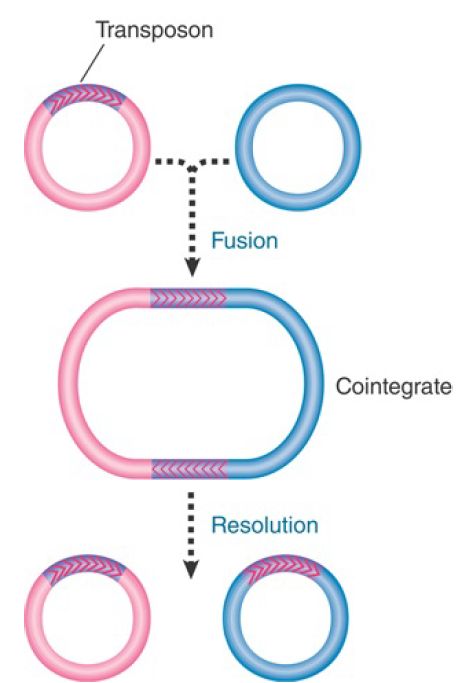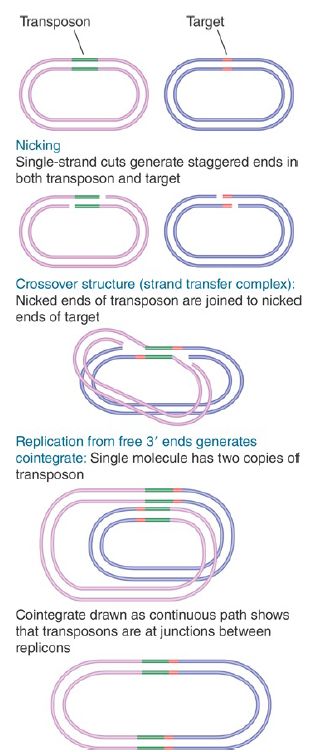

النبات

مواضيع عامة في علم النبات

الجذور - السيقان - الأوراق

النباتات الوعائية واللاوعائية

البذور (مغطاة البذور - عاريات البذور)

الطحالب

النباتات الطبية


الحيوان

مواضيع عامة في علم الحيوان

علم التشريح

التنوع الإحيائي

البايلوجيا الخلوية


الأحياء المجهرية

البكتيريا

الفطريات

الطفيليات

الفايروسات


علم الأمراض

الاورام

الامراض الوراثية

الامراض المناعية

الامراض المدارية

اضطرابات الدورة الدموية

مواضيع عامة في علم الامراض

الحشرات


التقانة الإحيائية

مواضيع عامة في التقانة الإحيائية


التقنية الحيوية المكروبية

التقنية الحيوية والميكروبات

الفعاليات الحيوية

وراثة الاحياء المجهرية

تصنيف الاحياء المجهرية

الاحياء المجهرية في الطبيعة

أيض الاجهاد

التقنية الحيوية والبيئة

التقنية الحيوية والطب

التقنية الحيوية والزراعة

التقنية الحيوية والصناعة

التقنية الحيوية والطاقة

البحار والطحالب الصغيرة

عزل البروتين

هندسة الجينات


التقنية الحياتية النانوية

مفاهيم التقنية الحيوية النانوية

التراكيب النانوية والمجاهر المستخدمة في رؤيتها

تصنيع وتخليق المواد النانوية

تطبيقات التقنية النانوية والحيوية النانوية

الرقائق والمتحسسات الحيوية

المصفوفات المجهرية وحاسوب الدنا

اللقاحات

البيئة والتلوث


علم الأجنة

اعضاء التكاثر وتشكل الاعراس

الاخصاب

التشطر

العصيبة وتشكل الجسيدات

تشكل اللواحق الجنينية

تكون المعيدة وظهور الطبقات الجنينية

مقدمة لعلم الاجنة


الأحياء الجزيئي

مواضيع عامة في الاحياء الجزيئي


علم وظائف الأعضاء


الغدد

مواضيع عامة في الغدد

الغدد الصم و هرموناتها

الجسم تحت السريري

الغدة النخامية

الغدة الكظرية

الغدة التناسلية

الغدة الدرقية والجار الدرقية

الغدة البنكرياسية

الغدة الصنوبرية

مواضيع عامة في علم وظائف الاعضاء

الخلية الحيوانية

الجهاز العصبي

أعضاء الحس

الجهاز العضلي

السوائل الجسمية

الجهاز الدوري والليمف

الجهاز التنفسي

الجهاز الهضمي

الجهاز البولي


المضادات الميكروبية

مواضيع عامة في المضادات الميكروبية

مضادات البكتيريا

مضادات الفطريات

مضادات الطفيليات

مضادات الفايروسات

علم الخلية

الوراثة

الأحياء العامة

المناعة

التحليلات المرضية

الكيمياء الحيوية

مواضيع متنوعة أخرى

الانزيمات
Replicative Transposition Proceeds Through a Cointegrate
المؤلف:
JOCELYN E. KREBS, ELLIOTT S. GOLDSTEIN and STEPHEN T. KILPATRICK
المصدر:
LEWIN’S GENES XII
الجزء والصفحة:
22-4-2021
3602
Replicative Transposition Proceeds Through a Cointegrate
KEY CONCEPTS
- Replication of a strand transfer complex generates a cointegrate, which is a fusion of the donor and target replicons.
- The cointegrate has two copies of the transposon, which lie between the original replicons.
- Recombination between the transposon copies regenerates the original replicons, but the recipient has gained a copy of the transposon.
- The recombination reaction is catalyzed by a resolvase coded by the transposon.
The basic structures involved in replicative transposition are illustrated in FIGURE 1: The 3′ ends of the strand transfer complex are used as primers for replication. This generates a structure called a cointegrate, which represents a fusion of the two original molecules. The cointegrate has two copies of the transposon, one at each junction between the original replicons, oriented as direct repeats. The crossover is formed by the transposase. Its conversion into the cointegrate requires host replication functions.

FIGURE 1.Transposition may fuse a donor and recipient replicon into a cointegrate. Resolution releases two replicons, each containing a copy of the transposon.
Homologous recombination between the two copies of the transposon releases two individual replicons, each of which has a copy of the transposon. One of the replicons is the original donor replicon. The other is a target replicon that has gained a transposon flanked by short direct repeats of the host target sequence. The recombination reaction is called resolution; the enzyme activity responsible is called the resolvase.
The reactions involved in generating a cointegrate have been defined in detail for phage Mu and are illustrated in FIGURE 2. The process starts with the formation of the strand transfer complex (sometimes called a crossover complex). The donor and target strands are ligated so that each end of the transposon sequence is joined to one of the protruding single strands generated at the target site. The strand transfer complex generates a crossover-shaped structure held together at the duplex transposon. The fate of the crossover structure determines the mode of transposition.

FIGURE 2. Mu transposition generates a crossover structure, which is converted by replication into a cointegrate.
The principle of replicative transposition is that replication through the transposon duplicates it, which creates copies at both the target and donor sites. The product is a cointegrate.
The crossover structure contains a single-stranded region at each of the staggered ends. These regions are pseudoreplication forks that provide a template for DNA synthesis. (Use of the ends as primers for replication implies that the strand breakage must occur with a polarity that generates a 3′–OH terminus at this point.)
If replication continues from both of the pseudoreplication forks, it will proceed through the transposon, separating its strands and terminating at its ends. Replication is accomplished by hostencoded functions. At this juncture, the structure has become a cointegrate, possessing direct repeats of the transposon at the junctions between the replicons (as can be seen by tracing the path around the cointegrate).
 الاكثر قراءة في مواضيع عامة في الاحياء الجزيئي
الاكثر قراءة في مواضيع عامة في الاحياء الجزيئي
 اخر الاخبار
اخر الاخبار
اخبار العتبة العباسية المقدسة

الآخبار الصحية















 قسم الشؤون الفكرية يصدر كتاباً يوثق تاريخ السدانة في العتبة العباسية المقدسة
قسم الشؤون الفكرية يصدر كتاباً يوثق تاريخ السدانة في العتبة العباسية المقدسة "المهمة".. إصدار قصصي يوثّق القصص الفائزة في مسابقة فتوى الدفاع المقدسة للقصة القصيرة
"المهمة".. إصدار قصصي يوثّق القصص الفائزة في مسابقة فتوى الدفاع المقدسة للقصة القصيرة (نوافذ).. إصدار أدبي يوثق القصص الفائزة في مسابقة الإمام العسكري (عليه السلام)
(نوافذ).. إصدار أدبي يوثق القصص الفائزة في مسابقة الإمام العسكري (عليه السلام)


















